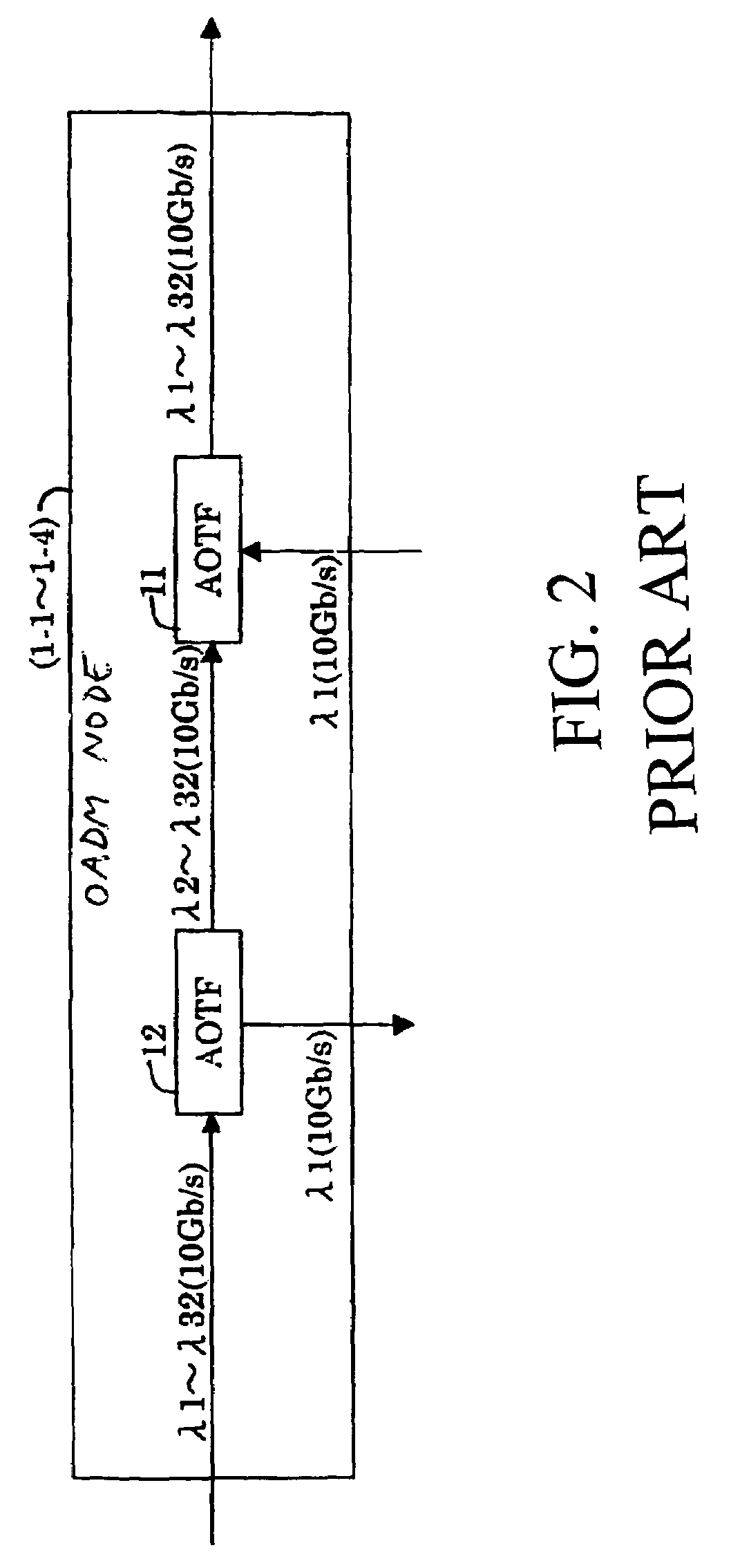Optical repeater converting wavelength and bit rate between networks
a technology of optical repeaters and networks, applied in the field of repeaters, can solve problems such as difficulty in connecting optical networks with different signal wavelengths and bit rates together, and mismatch in signal velocity of different networks
- Summary
- Abstract
- Description
- Claims
- Application Information
AI Technical Summary
Benefits of technology
Problems solved by technology
Method used
Image
Examples
Embodiment Construction
[0048]Reference will now be made in detail to the present preferred embodiments of the present invention, examples of which are illustrated in the accompanying drawings, wherein like reference numerals refer to like elements throughout.
[0049]FIG. 3 is a diagram illustrating two networks connected together, according to an embodiment of the present invention. Referring now to FIG. 3, ring network A is formed by connecting OADMs 1-1, 1-2, 1-3 and 1-4 together through a transmission line consisting of an optical fiber. Similarly, ring network B is formed by connecting OADMs 1-5, 1-6, 1-7 and 1-8 together through a transmission line consisting of an optical fiber.
[0050]Network A and network B are different in the signal bit rate and signal channel space(wavelength interval). For example, in network A, the bit rate is 10 Gb / s, there are 32 channels with 100 GHz channel space. In network B, the bit rate is 2.5 Gb / s, there are 128 channels with 25 GHz channel space.
[0051]Network A and netw...
PUM
 Login to View More
Login to View More Abstract
Description
Claims
Application Information
 Login to View More
Login to View More - R&D
- Intellectual Property
- Life Sciences
- Materials
- Tech Scout
- Unparalleled Data Quality
- Higher Quality Content
- 60% Fewer Hallucinations
Browse by: Latest US Patents, China's latest patents, Technical Efficacy Thesaurus, Application Domain, Technology Topic, Popular Technical Reports.
© 2025 PatSnap. All rights reserved.Legal|Privacy policy|Modern Slavery Act Transparency Statement|Sitemap|About US| Contact US: help@patsnap.com



